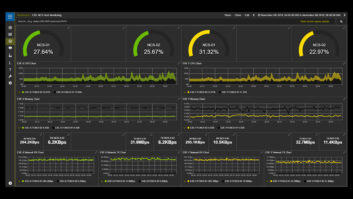Today’s broadcasting landscape is highly dynamic and characterised by emerging innovations. Media companies leverage the latest technologies to embark on new opportunities and meet changing consumer demands. The near-global ubiquity of broadband and wireless internet and the constantly increasing depth of connected consumer devices have reshaped the television status quo. Media organisations now have to stretch themselves across new and emerging distribution channels to reach audiences, including social media, direct-to-consumer services, free ad-supported streaming TV (FAST) channels, and over-the-top (OTT) platforms.
For many, this is too costly, and they lack the right capabilities. To streamline workflows and minimise Capex and Opex, media companies need robust and scalable video transport solutions as part of an open and reliable technology strategy.
How to tackle the challenge of increasing consumer demand
Video transport and delivery are under more strain than ever, driven by rapid shifts in content regionalisation, technology, regulation, and consumer trends. Media owners and operators must reach audiences with tailored, locally relevant, and platform-specific content. To unlock the potential of increasing consumer demand, content providers must enable efficient versioning with customisation such as captioning, audio translation, subtitling, graphics, and advertising. Cloud-based solutions have proven to be a cost-efficient and flexible option for this and are expected to grow in importance as the markets adapt, and demand fluctuates.
Overcoming obstacles in live feed delivery
Internet video consumption has recently surged due to the shift toward video-on-demand (VoD) streaming and the convergence of traditional linear and OTT television. Technology leaders at media companies have been exploring IP-enabled terrestrial transmission as an alternative to satellite for some time now, with internet-based delivery harnessing multicast capabilities, including enabling equivalent cost, scale, and global reach.
However, to ensure an effective rollout of video transport over the internet at scale, there needs to be greater support and efficiency. Standard internet routing architecture and protocol-only solutions built on thousands of internet service provider (ISP) networks can not deliver high reliability and low delay. Achieving both highly reliable and fast delivery has been a significant challenge. Without the ability to multicast this process, media companies will be unable to meet the volume of receivers required in a modern content distribution model.

To solve these limitations, LTN has developed innovative and patented technology, including LTN Rapid Error Recovery (RER) protocols and LTN dynamic multi-carrier routing (DMR) algorithms and architecture as part of its proprietary IP multicast network. LTN’s DMR architecture automatically routes live customer traffic around congested or delayed carrier paths, creating high availability connectivity by utilising multiple tier 1 carrier backbones. LTN RER runs across the entire LTN Network, enabling rapid loss recovery in milliseconds – far quicker than the standard end-to-end recovery that may take hundreds or even thousands of milliseconds. Both solutions protect against loss and indefinite delays and provide content providers with service-level-agreement (SLA) assurances.
The importance of a connected strategy
Many media organisations have already adopted an IP-based approach to video transport. Still, they face obstacles and limitations around reliability, quality, and scale without the right technology and support strategy. Content providers need the ability to take one feed and automatically deliver it to thousands of destinations.
Technology like the LTN Network enables media owners to multicast live content from one source to multiple endpoints cost-efficiently and reliably. Customers are provided with improved service availability, reliability, and latency to thousands of receivers, at once.
LTN’s open architecture and support for various first and last mile protocols minimises complexity in today’s hybrid media landscape. This gives media companies the luxury to operate in complex environments more efficiently than ever.
Finding the right partner
Media companies need a network partner to help acquire content in any format and deliver it across every format, platform, and protocol as required. Customers should look for technology partners that simultaneously support a full range of transmission methodologies to accommodate their needs while improving manageability, reliability, quality, and scalability. Democratising connectivity is at the core of the LTN Network. Through LTN, media organisations across the spectrum can scale up content distribution and empower business growth today and in the future.
Find out more at www.ltnglobal.com







